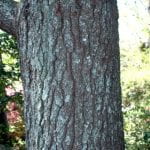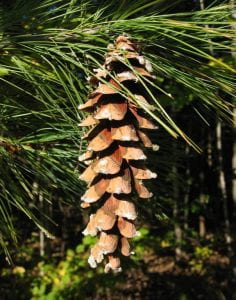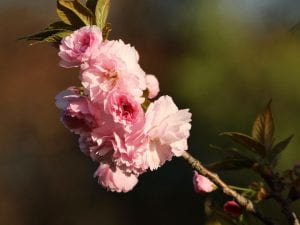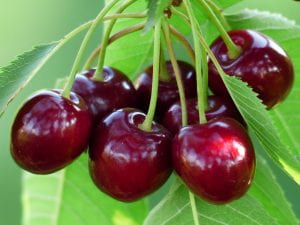by Sharon Lunden, Goshen Master Gardener Volunteer
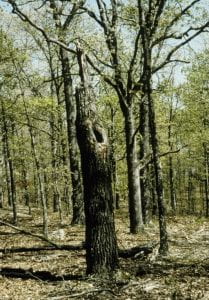 Did you know a dead or dying tree is called a snag and that snags serve a vital purpose in the ecosystem? I never seriously considered that until attending a webinar presented by Gillian Martin on The Life of A Dying Tree and was fascinated to learn the many benefits of keeping a snag in your yard and wooded areas. I was curious to know the source of their nickname which, according to etymonline.com is a derivative of an ancient word:
Did you know a dead or dying tree is called a snag and that snags serve a vital purpose in the ecosystem? I never seriously considered that until attending a webinar presented by Gillian Martin on The Life of A Dying Tree and was fascinated to learn the many benefits of keeping a snag in your yard and wooded areas. I was curious to know the source of their nickname which, according to etymonline.com is a derivative of an ancient word:
snag (n.)1570s, “stump of a tree, branch,” of Scandinavian origin, compare Old Norse snagi “clothes peg,” snaga “a kind of ax,” snag-hyrndr “snag-cornered, with sharp points.”
You can almost picture a dead tree as a clothespin, and if you played in the woods as a child, you likely noticed or even tripped over the jagged edges of a fallen tree. Fallen trees or parts of trees are called logs, and also provide many benefits to insects and other wildlife.
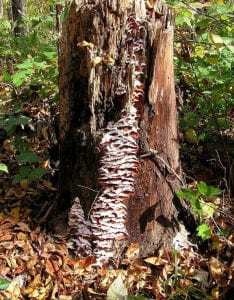
Some of the smallest beneficiaries of a snag are fungi, which begin to break down the dead material. Fungi then become a meal for insects. Snags provide a home for a great many spiders; spider webs are made of a strong silk which is utilized like duct tape in nest building by birds such as the ruby-throated hummingbird. Raptors like the bald eagle utilize dead branches and sticks for building their nests.
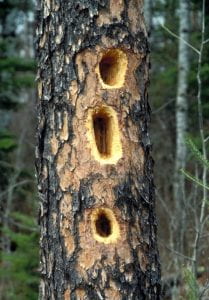
Snags provide a home for boring insects. No, insects are not boring, just ask an entomologist! Certain ants, beetles and other invertebrates bore holes to live in, and in turn become dinner for birds like woodpeckers, who also nest in cavities in snags. There are at least twenty cavity nesting woodpeckers and eighty types of cavity nesting birds. The holes that woodpeckers drill in snags provide 47% of the nesting cavities for other birds and creatures who do not do their own excavating: ducks, owls, bats, falcons and over forty song birds, as well as small mammals like squirrels, raccoons and martens, and larger mammals like bear and fox. Thirty percent of our native bees nest in tree cavities!
Reptiles will use downed trees as a place to sun themselves, and many creatures will seek cover from the sun or predators under a log.

Since snags have no foliage, they provide an excellent perch with unobstructed views for raptors on the hunt for dinner. The hard wood provides an anvil where birds and small mammals can crack open nuts and seeds or bugs and beetles with a hard exoskeleton. Squirrels and some birds will store food in the cracks and crevices provided in decaying trees.
Logs left on the ground also help prevent runoff, absorbing water and covering the soil.
Of course, in the forest, dead and dying trees pose no threat of injury or damage, however in your own yard you will want to assess the risks of leaving a dying tree in place. Pay close attention and you can tell when a tree is on its way out – woodpeckers are a telltale sign, as are cavities developing below dead limbs.
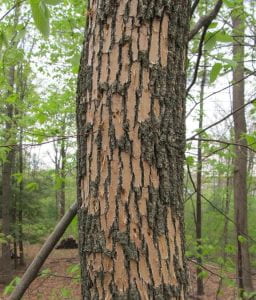
A hard snag is a recently dead tree; soft snags have lost all bark and are often already home to woodpeckers and other creatures. As much as possible, retain a snag for as long as possible, however only if it can safely fall over in place, so snags close to your home and other structures likely will need to be removed, or possibly trimmed to remain in place for a longer period. Take the weight of snow into consideration; snow can bring down branches in a hurry. If the snag is surrounded by other healthy trees which prevent it from falling down completely, or near an area where it can fall to the ground without causing damage, consider leaving it in place and allow nature to take its course. Before removing a snag, be aware of what may already be living inside. When taking down a snag, is beneficial to leave the material in the general area, if you are able. A good arborist will be able to assess the possibilities for any snag on your property.
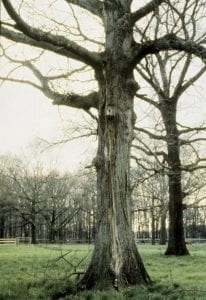
Dead and dying trees offer benefits that live trees cannot and enhance the diversity of wooded areas and the forest. Next time you are out in your yard or in the woods for a hike, look for snags. Observe them closely and consider what they are offering to the surrounding area – hopefully you will find a new appreciation for them.
For more information:
The Cavity Conservation Initiative
The Dying Tree: Nature’s Legacy – Gillian Martin
What is a Snag? – Tree First Arboriculture
To locate a certified arborist:
Trees are Good – International Society of Arboriculture

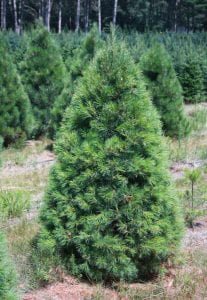 It is believed that the Christmas tree originated in Latvia in the early 1500s and the tradition was brought to the United States by German settlers in the 1800s. It was originally tabletop size but soon became floor to ceiling size. Christmas trees started to be sold commercially in the United States in 1851. At that time, Christmas trees were harvested from forests. Eventually conservationists became concerned that the natural supply of evergreens was being decimated, which lead to the creation of Christmas Tree Farms. The first Christmas Tree Farm in the United States was started in New Jersey in 1901 and grew Norway spruce trees.
It is believed that the Christmas tree originated in Latvia in the early 1500s and the tradition was brought to the United States by German settlers in the 1800s. It was originally tabletop size but soon became floor to ceiling size. Christmas trees started to be sold commercially in the United States in 1851. At that time, Christmas trees were harvested from forests. Eventually conservationists became concerned that the natural supply of evergreens was being decimated, which lead to the creation of Christmas Tree Farms. The first Christmas Tree Farm in the United States was started in New Jersey in 1901 and grew Norway spruce trees. The eastern white pine is a very large tree, fifty to eighty feet tall and twenty to forty feet wide. It can often be identified by its lone silhouette as it towers over other trees in the forest or by its wide base and gradual layering of upswept branches up to the top.
The eastern white pine is a very large tree, fifty to eighty feet tall and twenty to forty feet wide. It can often be identified by its lone silhouette as it towers over other trees in the forest or by its wide base and gradual layering of upswept branches up to the top. 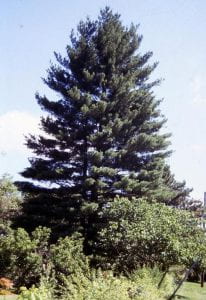 Somewhere between 25-35 million live Christmas trees are sold in the United States each year. When grown as a Christmas tree, the eastern white pine is cut at six feet and is usually sheared. It takes 6-8 years to produce an eastern white pine Christmas tree whereas it takes other an average 15 years for other Christmas tree species making it very profitable for Christmas tree growers.
Somewhere between 25-35 million live Christmas trees are sold in the United States each year. When grown as a Christmas tree, the eastern white pine is cut at six feet and is usually sheared. It takes 6-8 years to produce an eastern white pine Christmas tree whereas it takes other an average 15 years for other Christmas tree species making it very profitable for Christmas tree growers.